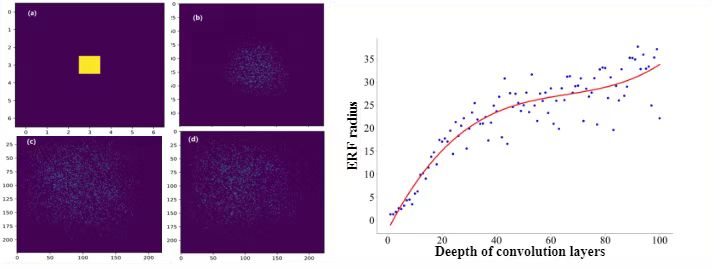
Deep learning plays important role in artificial intelligence (AI), which yet faces challenges in object representation. In particular, with object sizes decreasing, recognition and detection become more difficult and inaccurate.
Recently, a research team led by researcher WANG Hongqiang from Hefei Institutes of Physical Science (HFIPS), Chinese Academy of Sciences (CAS) proposed a strategy to stimulate human eyes’ homocentric opponent phenomenon (HOP) in the field of vision.
According to a recently published paper on Neurocomputing, the effective field-of-view theory is applied to strengthen the AI representation learning model, and it is proved in the research that the model can significantly improve the performance of target detection.
At the outset, researchers noticed that there always exists an effective receptive field (eRF) when eyes are paying attention to something.
Mimicking this, they designed an eRF module for deep neural networks, which can retain the training samples within the range of the objects' effective receptive field. At the same time, they adaptively adjusted the size of effective receptive fields for varying backbone network layers for sample balance.
Compared with current products on market, the model enhanced object representation of deep networks with less training epochs and higher accuracy. By comparative experiment, the model in terms of recommendation effect achieved an average precision of 32.5%, which was 10% higher than traditional one. The key point is that the performance on small objects detection was also better than other models.
This work was supported by the National Natural Science Foundation of China and the Key Research and Development Program of Anhui Province.

Numerical simulation of the change of the effective field of view of the network. (Image by WANG Hongqiang)